Today, we celebrate the establishment of our National Anthem!
Like everyone who grew up in the United States, I heard our National Anthem constantly, at school pep rallies or assemblies, graduations, and all levels of sports, from peewee baseball to the major leagues. For newcomers to this country, however, the US National Anthem may be a foreign concept. Although they may come across it, language barriers and lack of familiarity with it may keep them from understanding its importance to American history.
U.S. Naturalization Interview
However, for people preparing for the US Naturalization Interview, the National Anthem is one of the 100 questions they may be asked. A question that can determine their future. If they pass, this will be the anthem they get to proudly sing at their US Naturalization and Oath Ceremony, cementing them as US Citizens.
The US Naturalization Interview consists of an overview of the interviewee's N-400 application, 10 Civics and History questions,
and a written and oral exam. The last two are used to demonstrate the individual's knowledge of the English language, for which depending on one’s age you may be exempt from taking. For the Civics and History portion, there are 100 possible questions. 10 questions are randomly selected the day of your exam, and you only need to answer 6/10 correctly.
Question number 98 asks, “What is the name of the national anthem?” with "The Star-Spangled Banner" being the correct and only answer. (Some questions have more than one possible answer, some vary by the state you reside in, and some will require more than one answer.)
Whether or not you’re preparing for the USCIS Naturalization Interview, you may have questions surrounding the "The Star-Spangled Banner." This blog will give you a bit of its history, but just for fun, I will include some of the celebrity performances I best remember. Feel free to share your own in the comments.
Drafting "The Star-Spangled Banner"
On September 5, 1814, attorney, Francis Scott Key sailed from Baltimore to Chesapeake Bay to meet with a British Fleet that was holding Dr. William Beanes prisoner. Dr. Beanes was an elderly civilian, and innocent.
It was during this trip that Key witnessed the Battle of Fort McHenry, a harrowing 25-hour bombardment by the British. Inspired by the perseverance of the American soldiers, and relieved to witness his nation’s 15-star, 15-stripe flag still standing, he drafted the "The Star-Spangled Banner."
Days later, Francis Scott Key successfully negotiated Dr. Beanes' release alongside his fellow lawyer, John S. Skinner. His copy of "The Star-Spangled Banner" was later given to a Baltimore printer and distributed to the U.S. soldiers who served in the defense of Fort McHenry.
Although drafted by Key, people made many alterations to the music and the wording so that by the early 20th century, there were multiple versions of it available. In 1916, President Woodrow Wilson ordered military bands to play the song on patriotic occasions. To avoid confusion, he called upon the U.S. Bureau of Education to create a standard edition of the song. A year later the new standardized version was heard for the first time on December 5 at Carnegie Hall.
Our National Anthem
For years after it was written, "The Star-Spangled Banner" served as the de facto national anthem but it was not officially recognized as such until 1931. Although a favorite amongst the masses, various other songs were played on military bases and at events of national importance as a show of patriotism.
In 1929, Representative John Linthicum of Maryland introduced a bill to the House of Representatives asking that "The Star-Spangled Banner" be recognized as our nation’s National Anthem. For two years discussions surrounding the subject swept the country. Most argued for establishing an official anthem to bolster patriotism, but while in agreement with this, many argued against "The Star-Spangled Banner." Some of its verses were believed to be controversial, a subject which to this day is debated regularly.
Ultimately, Congress officially designated the song as the national anthem and on March 3, 1931, it was signed into law by President Herbert Hoover. The following is the first verse of the anthem, which is traditionally all that is played of the song during national events.
“Oh, say can you see by the dawn's early light,
What so proudly we hailed at the twilight's last gleaming?
Whose broad stripes and bright stars thru the perilous fight,
O'er the ramparts we watched were so gallantly streaming?
And the rocket's red glare, the bombs bursting in air,
Gave proof through the night that our flag was still there.
Oh, say does that star-spangled banner yet wave,
O'er the land of the free and the home of the brave?”
What’s in a Performance
Like many, I’ve witnessed our National Anthem performed more times than I can remember, but I’d like to share a few of the instances that are engraved in my memory. These are shared in no particular order, and with no comment on the quality of the performance. I am not a music critic after all.
- Reba McEntire at Super Bowl LVIII in 2024.
- Christina Aguilera at Super Bowl XLV in 2011.
- Mariah Carey at Super Bowl XXXVI in 2002.
- Whitney Houston at Super Bowl XXV in 1991.
- Jimi Hendrix at Woodstock in 1969
- Andrea Rosario at the WBC Middleweight Championship, Chavez vs Zbik, in 2011.
- Sebastien De La Cruz, before Game 3 of the NBA final in 2013.
- Fergie at the 2018 NBA All-Star Game.
- Lady Gaga at the inauguration of President-elect Joe Biden and Vice President-elect Kamala Harris.
- Beyonce at the inauguration of President-elect Barrack Obama and Vice President-elect Joe Biden.
- Reba McEntire at WrestleMania VIII in 1992.
Special mention
- My performance of the National Anthem at a middle school boys' basketball game in 2007.
Citizenship Resources
For more information about our Citizenship classes and other resources see here.
BECOMING A U.S. CITIZEN: A GUIDE TO THE LAW, EXAM & INTERVIEW


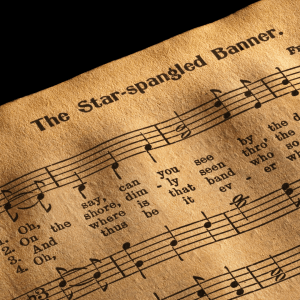
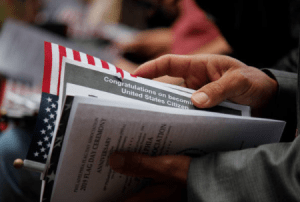
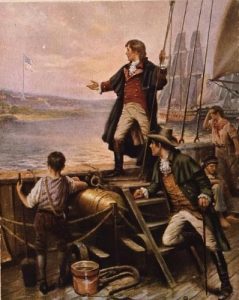
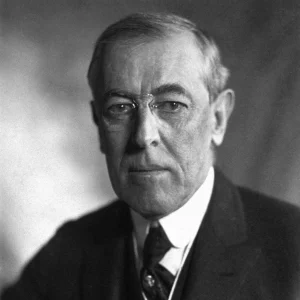
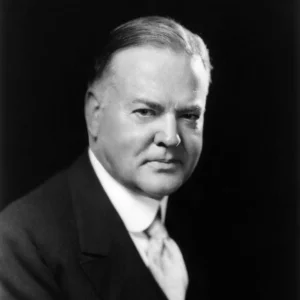

Add a comment to: Celebrating our National Anthem – Citizenship Question #98